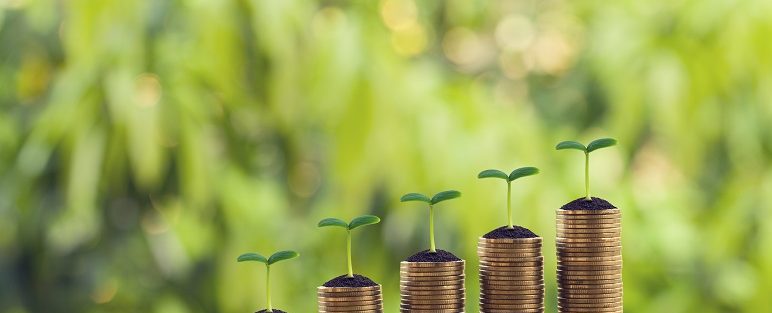Hon. (Amb.) Ukur Yatani, Cabinet Secretary for The National Treasury and Planning, in his opening statement of the report, said: “Kenya’s economy is highly dependent on its natural resource base,” thus making it highly vulnerable to climate change and threatening the Vision 2030 goal to create a globally competitive and prosperous nation with a high quality of life. Addressing climate change requires economic transformation by integrating climate change into development policies and actions across multiple sectors. The government in the budget 2021-22 allocated Kshs 94.4 bn to Environment Protection, Water and Natural Resources as shown in table 1.
Table 1: Environment Protection, Water and Natural Resources Budget Allocation
| Initiative | Amount (Kshs, Billions) |
| Forests and Water Towers Conservation | 9.5 |
| Water Resources Management | 16.4 |
| Water and Sewage Infrastructure Development | 39.1 |
| Water Storage and Flood Control | 10.8 |
| Irrigation and Land Reclamation | 10.4 |
| Wildlife Conservation and Management | 8.2 |
| TOTAL | 94.4 |
An addition allocation of Kshs 6.9 bn was allocated for improving environment protection, water, and sanitation, under the Post Covid -19 Economic Stimulus Programme putting the total budget allocated for Environment Protection, Water and Natural Resources at Kshs 101.3 bn. The Agricultural sector will benefit the most from this as it will tap into these resources and reduce reliance on rainfall. The allocation will also be a boost to the tourism sector as wildlife conservation and management allocation will go a long way in protecting this tourist attraction.
The Government under the Big 4 Agenda of Enhancing Food and Nutrition Security to all Kenya’s also allocated Kshs 1.5 bn to Small Scale Irrigation and Value Addition Projects and Kshs 10.7 bn to increasing agricultural productivity and enhance resilience to climate change risks in targeted smallholder farming and pastoral communities.
Exempting solar and wind energy generating equipment promotes the uptake of clean solar and wind energy by both small scale and large-scale consumers. This supports the manufacturing sector which may benefit from reduced production costs through reduced power bills and consistent energy supply. The latter actions wholesomely benefit the society through cleaner air from reduced carbon emission.
For Kenya to reach the scale of finance needed to achieve its Nationally Determined Contributions (NDC), the private sector will need to play a larger role in the key sectors beyond renewable energy. To attract more private finance into other sectors, there is a need for a more conducive enabling environment. The use of public sector instruments and well-crafted supportive policies and regulations can encourage additional private sector investments, reducing the perceived risk of investing in Kenya’s clean projects. For example, targeted incentives for investments in ‘high risk’ sectors using incentives such as government guarantees and tax exemptions, which will help minimize the risks associated with low-carbon and climate-resilient investment.
The Kenyan private sector can profit from the opportunities available in low-carbon infrastructure, such as solar grids, which would reduce business risk. Capacity building can also increase the ability of Kenyan companies to identify opportunities arising from climate change and implement solutions to preserve their business operations through adverse climate conditions. Capacity building would also benefit financial institutions in Kenya, increasing their capacity to review climate-related lending opportunities, and access concessional capital from development finance institutions for green lending to their customers. Corporates and MSME’s face difficulties in accessing finance from domestic commercial banks whose risk aversion and limited understanding of low-carbon opportunities result in high interest rates as well as high collateral requirements. Public-private partnerships (PPPs) are another effective solution to encourage private sector participation in climate projects. Private sector associations also have a role to play as they are an effective vehicle for creating awareness and providing information on climate change to their members.
Through sustainable finance and collaboration between government, international organizations, and the private sector, Kenya can be transformed to a sustainable economy where we protect the environment and our resources so that they can benefit us and future generations to come. We all have a part to play in transforming Kenya to a sustainable economy be it through raising awareness of sustainability issues, efficient and effective use of natural resources or facilitating sustainable finance to the sectors and people most affected by climate change.
KCIC Consulting plays a role in promoting sustainable financing through projects such as the Blended Finance Project which is a collaboration with Kenya Banker Association and FSD Kenya which seeks to promote the flow of sustainable finance from Development Finance Institutions through the vast network and infrastructure of Kenyan commercial banks to Micro, Small and Medium enterprises (MSME’s) who need this financing to mitigate and adopt to climate change. Other initiatives by KCIC Consulting in sustainable financing include collaboration with the National Treasury and the Climate Policy Initiative to track climate finance in Kenya and develop The Landscape of Climate Finance in Kenya. KCIC Consulting also provides MSME’s with investor readiness training and linkages to sustainable finance.
The writers are Private Sector Development Experts at KCIC Consulting Ltd.



